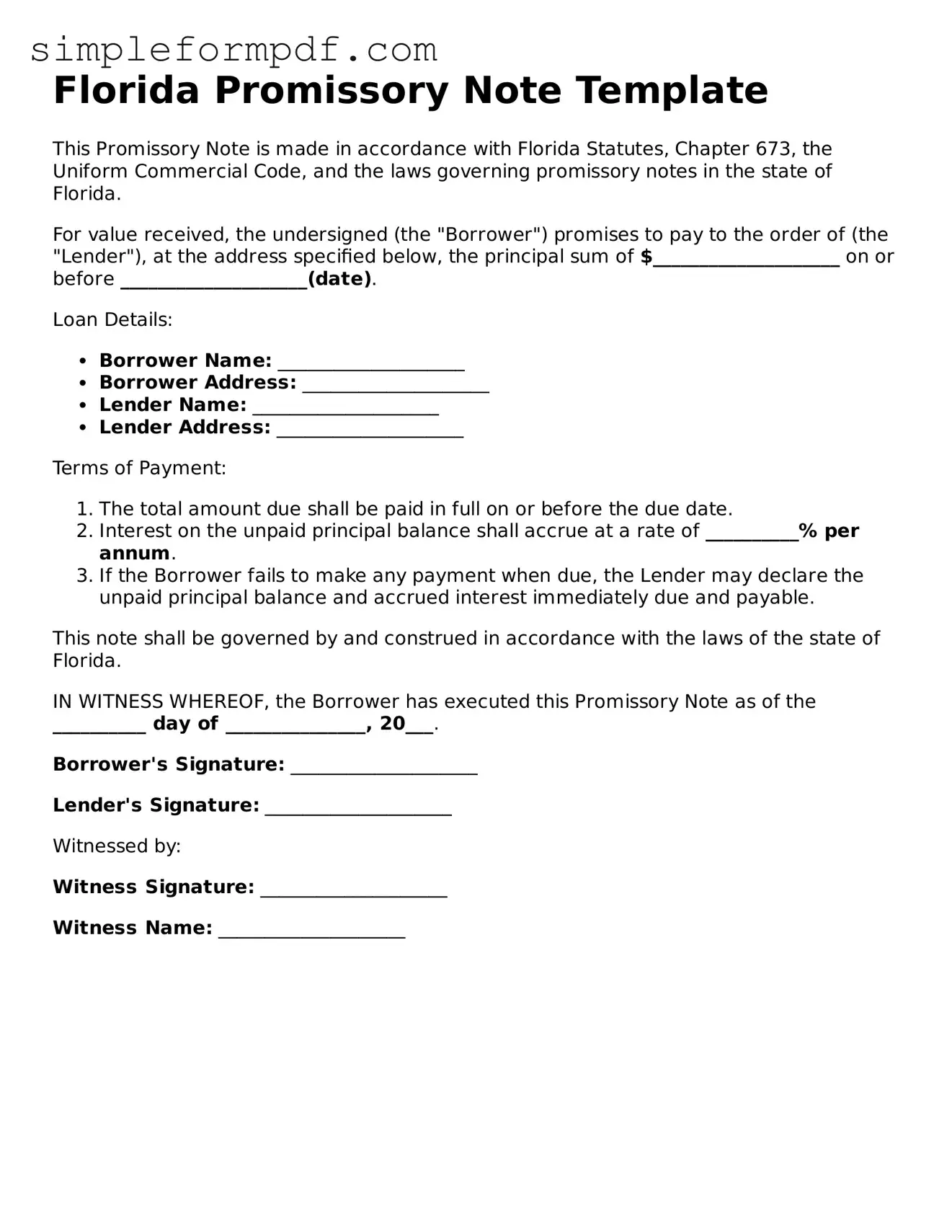Florida Promissory Note Template
This Promissory Note is made in accordance with Florida Statutes, Chapter 673, the Uniform Commercial Code, and the laws governing promissory notes in the state of Florida.
For value received, the undersigned (the "Borrower") promises to pay to the order of (the "Lender"), at the address specified below, the principal sum of $____________________ on or before ____________________(date).
Loan Details:
- Borrower Name: ____________________
- Borrower Address: ____________________
- Lender Name: ____________________
- Lender Address: ____________________
Terms of Payment:
- The total amount due shall be paid in full on or before the due date.
- Interest on the unpaid principal balance shall accrue at a rate of __________% per annum.
- If the Borrower fails to make any payment when due, the Lender may declare the unpaid principal balance and accrued interest immediately due and payable.
This note shall be governed by and construed in accordance with the laws of the state of Florida.
IN WITNESS WHEREOF, the Borrower has executed this Promissory Note as of the __________ day of _______________, 20___.
Borrower's Signature: ____________________
Lender's Signature: ____________________
Witnessed by:
Witness Signature: ____________________
Witness Name: ____________________
